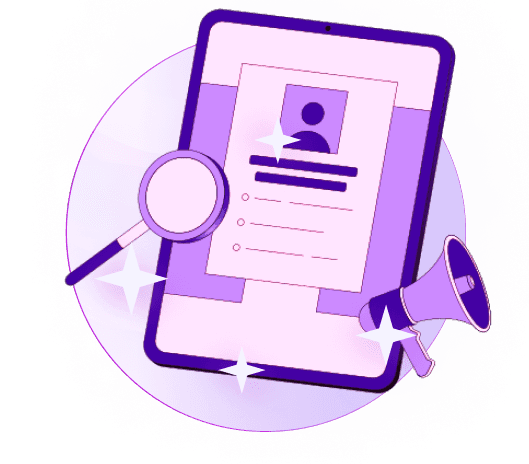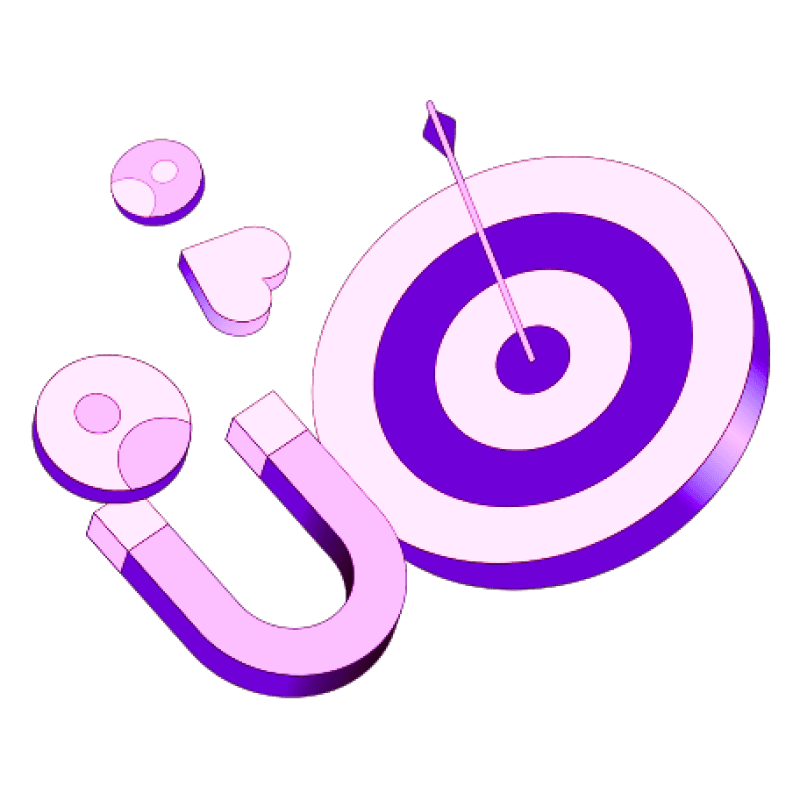Blogs
Articles

How to Set Up Lead Scoring Automation: A Step-by-Step Guide for 2025
Did you know that 68% of leading marketers call lead scoring a top revenue contributor?
But here's the challenge - 53% of salespeople say selling became harder in the last year. Your business might lose valuable opportunities to competitors without a well-laid-out lead scoring automation system.
This piece will show you how to build your own lead scoring automation system. You'll save time and resources while focusing on prospects who are more likely to convert. Let's tuck into what makes lead scoring crucial and how automation will revolutionize your sales process in 2025.
What is lead scoring and why it matters?
Lead scoring guides businesses to assign numerical values to leads through their behaviors, demographics, and interaction with your business. Your sales team can prioritize prospects who are most likely to convert by using this systematic approach that puts the most promising opportunities first.
Lead scoring acts as a contract between sales and marketing teams that work well together. The process creates clear definitions of lead quality and helps teams line up their efforts. On top of that, it shows whether prospects fit your ideal customer profile (explicit scoring) and demonstrate enough interest (implicit scoring).
Manual vs. automated lead scoring
Traditional manual lead scoring gives points to different attributes and behaviors based on set criteria. This method gives you complete control over the scoring process, but comes with major drawbacks:
Sales representatives spend too much time scoring leads
Team members often score leads differently
Important qualitative factors might get overlooked
Automated lead scoring exploits AI and machine learning to spot patterns in customer data. Modern CRMs and marketing tools process thousands of data points at once through predictive algorithms, which brings several benefits:
Makes lead qualification faster and easier
Scores leads more objectively than manual methods
Grows with your business
Reflects changing behaviors automatically
Common challenges with traditional scoring
Traditional lead scoring faces several critical challenges despite its popularity. Research shows that all but one of these 98% of Marketing Qualified Leads (MQLs) fail to become closed business, which reveals deep flaws in conventional methods.
These problems are systemic:
Point values get assigned randomly instead of using historical data
Early-stage actions receive too many points without showing real buying intent
External factors like market trends or competitor analysis get ignored
Old criteria don't adapt to new customer behaviors
A lead's buying readiness gets oversimplified
The situation gets worse because many businesses ignore negative lead scoring. They should deduct points for warning signs like unsubscribes or inactivity. This oversight creates bloated lists of supposedly "qualified" leads who lost interest long ago.
Prepare Your Data and Define Criteria
Your lead scoring automation needs clean, well-prepared data as its foundation. The data quality will shape how accurate your scoring model turns out.
Identify key behaviors and attributes
Start by spotting actions that show real buying interest. A good lead scoring system needs input from several places:
Sales team insights: Your sales reps know firsthand what signals show a lead's readiness to buy
Customer feedback: Talk to current customers about what made them decide to purchase
Analytics data: Check attribution reports to see which content pushes conversions through your funnel
Next, give points to specific actions based on how they connect to sales. To name just one example, a pricing page visit might earn +5 points. A webinar signup could get +5 to +15 points depending on how much it matters in your sales process.
Segment leads by fit and intent
Beyond total scores, you can group leads into quadrants using two key factors:
Fit - How well your product matches what prospects need
Intent - How hard they're looking for a solution
This creates four groups: High Fit/High Intent (easy wins), Low Fit/Low Intent (poor matches), Low Fit/High Intent (risky zone), and High Fit/Low Intent (your best chances).
B2B companies usually measure fit through company size, industry, and decision-maker role. Intent shows up in engagement patterns and content consumption.
Set disqualification rules
Spotting leads not worth chasing matters just as much. Take points away for:
Unsubscribes from email lists (-10 points)
Career page visits (-10 points)
Non-business email domains (-20 points)
Spam submissions
Competitors (remove 1,000 points to filter them out)
Negative scoring keeps your database tidy and saves your sales team's time. Build your disqualification rules around clear signs that consistently show unsuitable leads.
Set Up Your Lead Scoring Automation
Your prepared data sets the stage to implement lead scoring automation. This vital step changes your scoring strategy into a working system that spots your most promising leads automatically.
Choose a lead scoring software or CRM
The first step is picking a platform that lines up with what your business needs. You should think about these essential features:
AI-powered analytics that can predict conversion likelihood using historical patterns
CRM integration that ensures continuous connection between systems
Customization options that let you tailor scoring models to your specific business requirements
Explainable AI features that show you how scores are calculated
Popular choices include HubSpot with its AI-assisted engagement scoring, Salesforce and its predictive models, and ActiveCampaign which lets you run multiple distinct scoring programs.
Assign point values to actions and attributes
A point system based on lead behaviors and characteristics comes next. These approaches work well:
Give higher values to conversion events (like demo requests) compared to awareness activities (such as page visits)
Set maximum scores for different criteria groups to balance their importance
Use negative scoring for unwanted actions like career page visits or unsubscribes
Define your qualification threshold
The threshold you pick determines when leads move from marketing to sales. Here's where to start:
Begin with a score threshold of 100 points
Set a grade threshold of B- (if you use letter grades with numeric scores)
Change thresholds based on your sales team's regular feedback
Enable real-time syncing with your CRM
The scoring system needs up-to-the-minute updates. These steps help you get the best results:
Set data sync frequency to immediate or brief intervals (every 5 minutes)
Create score-based alerts and automated lead assignments when leads hit thresholds
Set up workflows that match customer engagement data to boost conversion rates by 30%
Optimize and Monitor Your Scoring System
Lead scoring automation needs continuous attention. Your system must adapt to buyer behaviors and market conditions that change over time through a continuous optimization process. The most sophisticated models can become outdated without regular adjustments and hurt conversion rates.
Retrain your model with new data
Your scoring model needs regular refreshing with recent data. The model requires retraining when prediction accuracy falls below your organization's standards or becomes outdated. You can pick between:
Automatic retraining: Your system can retrain every 15 days to learn from the latest data
Manual retraining: You can edit attributes and retrain to make specific adjustments
Recent data plays a vital role because customer demographics and behaviors keep changing. A typical predictive model takes six to 24 hours to refine the data it receives.
Use A/B testing to improve accuracy
A/B testing gives valuable insights to make your lead scoring model better. You can compare your current system against a new variant by:
Running tests with control (existing model) and treatment (new model) groups
Assigning leads randomly to each scoring method
Looking at conversion rate differences between groups
This method helps you find the algorithms that create the best scoring results. You can then fine-tune your model based on ground outcomes.
Work together with sales and marketing teams
Sales and marketing arrangement will strengthen your lead scoring without doubt. Create a feedback loop where:
Sales team explains customer trends and pain points
Marketing team shares program outcomes and campaign data
Both teams develop relevant messaging together
Regular meetings should discuss what makes a good lead and assess quality from different channels.
Track conversion rates and lead quality
These key performance indicators need monitoring:
Conversion rates by lead score ranges
Sales cycle length for different score thresholds
Lead-to-customer conversion time
Lead quality at different score levels
Analysis of these metrics helps refine scoring criteria and adjust point values to improve lead prioritization. Persana.ai offers advanced analytics that can help optimize your lead scoring automation system with greater precision.
Conclusion
Lead scoring automation remains a vital component for sales and marketing success in 2025 and beyond. This piece explores how a well-laid-out scoring system helps teams focus their efforts on prospects most likely to convert. Teams ended up saving time and boosting revenue with this approach.
The data tells a compelling story—68% of leading marketers think over lead scoring as a top revenue contributor. Sales teams now face tougher selling environments, and automated lead scoring gives them a competitive edge through objective evaluation and prioritization.
A successful lead scoring system starts with proper data preparation and clear criteria definition. The right automation platform creates the foundations for your system's success. Your model needs continuous optimization to stay relevant as market conditions evolve.
Note that lead scoring automation goes beyond technological implementation. It creates a strategic line up between sales and marketing teams that builds a shared understanding of qualified leads and prospect nurturing methods.

Create Your Free Persana Account Today
Join 5000+ GTM leaders who are using Persana for their outbound needs.
How Persana increases your sales results
One of the most effective ways to ensure sales cycle consistency is by using AI-driven automation. A solution like Persana, and its AI SDR - Nia, helps you streamline significant parts of your sales process, including prospecting, outreach personalization, and follow-up.



